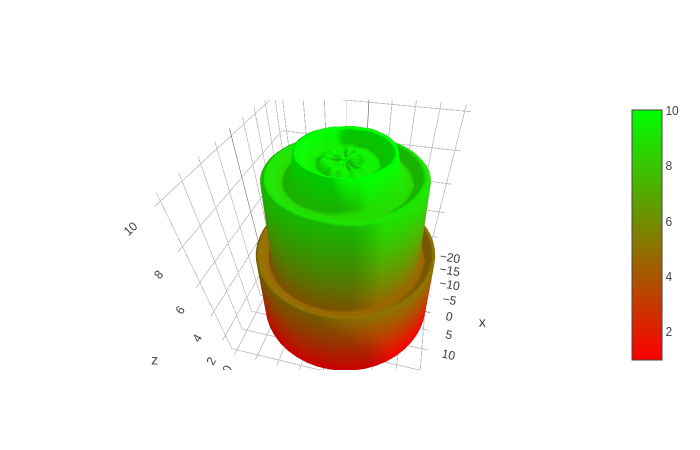On systemic health indicators (part 1)
In a world that becomes more complicated for people, it is more difficult to judge whether things are going ‘well’ or not. Economists and…


In a world that becomes more complicated for people, it is more difficult to judge whether things are going ‘well’ or not. Economists and politicians have traditionally used the term “Gross National Product” (GNP or GDP in English) for this: after all, if an economy grows, we will all benefit from it.
In recent decades it has become clear that this economic growth, certainly since the industrial revolution, also entails quite some consequential damage, especially in the social field (for example, growing inequality) and for our living environment (pollution, impoverishment of raw materials, decrease in biodiversity, etc).

We can certainly measure a number of things pretty well (Gini coefficient for income inequality for example), but most of these indicators only measure very superficial aspects. And suppose that a few of these indicators are suddenly moving in a worrying direction, that may indicate something underlying has changed. I mean: we only measure symptom aspects of the underlying system. Just like an elevated body temperature is a symptom caused by systemic stress.
Systemic indicators
When it comes to searching for new indicators that incorporate systemic aspects, it is easy to think of ‘circular’ chains, for example. The Dutch normalization institute NEN is development metrics that should give an indication of the extent to which a certain business sector is ‘circular’. That is certainly a step in the right direction.
More technical aspects look at the ‘connectivity’ in a system. The global damage caused by the financial crisis of 2008 is attributed, for example, to the increased ‘connectivity’ worldwide: everything is fairly directly connected to the global financial markets. Connectivity is not necessarily good or bad, but it does say something. Another technical aspect is ‘concentration’ (e.g. ‘systemic banks’). These are things that we can, more or less, measure. But in the end these are also ‘symptoms’ or ‘aspects’: increased connectivity is not ‘a disease’, it is only a change in our infrastructure that changes the dynamics.
We apparently find it difficult to really think in terms of ‘system dynamics’. Of course, we also do not fully understand how these (economic, ecological, …) system dynamics work.
Stability landscapes
That is why I would like to propose to sit at a somewhat higher abstraction level, and to look at why systems are actually stable or not. This can be done very technically, but it is intuitively easy to understand by looking at so-called ‘stability landscapes’.
These are graphical representations of ‘stable’ and ‘unstable’ places for a system to sit in. The state of a system often moves from one stable place to another stable place (due to displacement or addition of energy). And one stable place is more stable (deeper into the landscape) than the other stable place.
A good example can be found at:
https://cancerres.aacrjournals.org/content/75/13/2607/F2
You also see that a stable point is not necessarily a pleasant point, but more on that later.
The immediate vicinity of the deepest point of such a stable place (a valley) is called a ‘basin’. That is the environment where the state of a system always wants to move to the same place (namely the deepest point of that valley).
This landscape changes during the life of a cell. This landscape also has other stable places, with, in this case, the most extreme being that of the dead state.
A marble on a fractal landscape
You can theoretically create such a landscape for other organic systems, for example for yourself. You can assume that this is a large landscape, with a few large valleys, with many small hills and valleys inside. Being awake and sleeping state are examples of 2 large valleys, and there are undoubtedly many small hills and valleys (think fractal), between which your body constantly varies (often without you noticing this!). All kinds of metabolic processes and interactions with the environment can cause your body to roll from one state to another (such as the marble on the image above).
Our body is so complex that we cannot determine the actual landscape, but I have tried to make a profile:
The plateau on top can be seen as an environment of normal, healthy conditions. The hillside landscape on top therefore shows the various possible healthy / normal states. Around it is a high edge to a lower lying area. You can see this as all sorts of illnesses. It takes a virus or bacteria (or accident) quite a bit of effort to push the body over that highest edge, to these ‘disease states’. The body then falls into a lower energy state. And it takes the immune system, or a doctor etc, then again a lot of effort to push the body over the highest edge to the inner ring, to health!
It is clear that a few more pushes ‘in the wrong direction’ causes the system to become completely unstable and die. Again: this landscape itself changes during the life course of the organism. In the end there are of course much lower edges, or channels that run out.
Each concentric ring represents a kind of stability plateau, with small variations within it. In principle, the following will apply: the more complex a system, the higher these plateaus can be. And the surface of these plateaus, along with the height of the edges, are factors that reflect the stability of the system.
Again: this is a highly simplified representation. We cannot determine what it really looks like. In reality, this picture of your body looks much more complicated anyway. Moreover, this is only a 2-dimensional representation of the landscape (with the height as a systemic energy level), whereas in reality this is a high-dimensional landscape.
In part 2, I will elaborate on these types of landscapes and how we could use them to develop a new type of indicators for the health of our socio-economic and ecological domains.